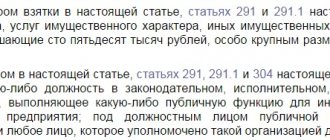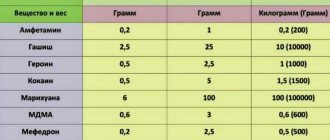Criminal Code of the Russian Federation in the latest edition:
Article 229.1 of the Criminal Code of the Russian Federation. Smuggling of narcotic drugs, psychotropic substances, their precursors or analogues, plants containing narcotic drugs, psychotropic substances or their precursors, or their parts containing narcotic drugs, psychotropic substances or their precursors, tools or equipment under special control and used for the manufacture narcotic drugs or psychotropic substances
1. Illegal movement across the customs border of the Customs Union within the EurAsEC or the State border of the Russian Federation with member states of the Customs Union within the EurAsEC of narcotic drugs, psychotropic substances, their precursors or analogues, plants containing narcotic drugs, psychotropic substances or their precursors, or their parts containing narcotic drugs, psychotropic substances or their precursors, instruments or equipment that are under special control and used for the manufacture of narcotic drugs or psychotropic substances -
shall be punishable by imprisonment for a term of three to seven years with or without a fine in the amount of up to one million rubles or in the amount of the wages or other income of the convicted person for a period of up to five years, and with or without restriction of freedom for a term of up to one year.
2. The same act committed:
a) by a group of persons by prior conspiracy;
b) by an official using his official position;
c) in relation to narcotic drugs, psychotropic substances or their analogues, plants containing narcotic drugs, psychotropic substances, or their parts containing narcotic drugs or psychotropic substances, in a significant amount -
shall be punishable by imprisonment for a term of five to ten years with or without a fine in the amount of up to one million rubles or in the amount of the wages or other income of the convicted person for a period of up to five years, and with or without restriction of freedom for a term of up to one and a half years.
3. Acts provided for in parts one or two of this article, committed in relation to narcotic drugs, psychotropic substances, their precursors or analogues, plants containing narcotic drugs, psychotropic substances or their precursors, or their parts containing narcotic drugs, psychotropic substances or their precursors, in large quantities, -
shall be punishable by imprisonment for a term of ten to twenty years with or without a fine in the amount of up to one million rubles or in the amount of the wages or other income of the convicted person for a period of up to five years, and with or without restriction of freedom for a term of up to two years.
4. Acts provided for in parts one, two or three of this article, committed:
a) an organized group;
b) in relation to narcotic drugs, psychotropic substances, their precursors or analogues, plants containing narcotic drugs, psychotropic substances or their precursors, or their parts containing narcotic drugs, psychotropic substances or their precursors, in an especially large amount;
c) with the use of violence against a person exercising customs or border control -
shall be punishable by imprisonment for a term of fifteen to twenty years with or without a fine in the amount of up to one million rubles or in the amount of the wages or other income of the convicted person for a period of up to five years and with or without restriction of freedom for a term of up to two years or with life imprisonment freedom.
Notes. Lost power. — Federal Law dated March 1, 2012 N 18-FZ.
Return to the table of contents of the document: Criminal Code of the Russian Federation in the latest edition
Comments on Article 229.1 of the Criminal Code of the Russian Federation
Public danger provided for in Art. 229.1 of the Criminal Code of the Russian Federation is that as a result of committing a crime, in violation of customs control, items prohibited for sale are imported or exported from one state to another.
The object of the crime is public health.
The subject of the crime is:
1) narcotic drugs; 2) psychotropic substances; 3) precursors included in List I and Table I of List IV of the List of Narcotic Drugs, Psychotropic Substances and Their Precursors Subject to Control in the Russian Federation, approved by the Government of the Russian Federation; 4) analogues of narcotic drugs, psychotropic substances; 5) plants containing narcotic drugs, psychotropic substances or their precursors, or their parts containing narcotic drugs, psychotropic substances or their precursors; 6) instruments or equipment that are under special control and used for the manufacture of narcotic drugs or psychotropic substances.
The concept of these items is given in relation to Art. Art. 228, 228.2 of the Criminal Code of the Russian Federation.
Precursors must be included in tables I and II of list IV of the List of narcotic drugs, psychotropic substances and their precursors subject to control in the Russian Federation, approved. Government of the Russian Federation.
The objective side of the crime is expressed in the illegal movement of the subject of the crime across the customs border of the Customs Union within the EurAsEC or the State border of the Russian Federation with member states of the Customs Union within the EurAsEC.
The terms used in Article 229.1 of the Criminal Code of the Russian Federation “customs border of the Customs Union within the framework of the EurAsEC” (“customs border of the Customs Union”), “State border of the Russian Federation with the member states of the Customs Union within the framework of the EurAsEC” should be understood, respectively, “customs border of the Eurasian Economic Union “,” “The state border of the Russian Federation with the member states of the Eurasian Economic Union” (clause 1 of the Resolution of the Plenum of the Supreme Court of the Russian Federation dated April 27, 2017 N 12 “On judicial practice in cases of smuggling”).
The movement of goods and other items across the customs border or state border consists of carrying out actions to import, respectively, into the customs territory of the Union or the territory of the Russian Federation or export from these territories of goods or other items in any way (clause 5 of the Resolution of the Plenum of the Supreme Court of the Russian Federation dated April 27, 2017 N 12).
The illegal movement of goods or other items across the customs border, as stated in paragraph 5 of Resolution of the Plenum of the Supreme Court of the Russian Federation dated April 27, 2017 N 12, should be understood as the movement of goods or other items:
- outside established places or during unspecified working hours of customs authorities in these places;
- or with concealment of goods from customs control;
- or with false declaration or non-declaration of goods;
- or using documents containing false information about goods or other items and (or) using counterfeit means of identification or those related to other goods or other items.
Criminal liability for the illegal movement of narcotic drugs, substances, precursors, analogues, plants and their parts under Part 1 of Art. 229.1 of the Criminal Code of the Russian Federation occurs regardless of their size .
If a person, along with the illegal movement across the customs border or across the state border of the items listed in Article 229.1 of the Criminal Code of the Russian Federation, commits an intentional unlawful act related to the illegal trafficking of these items, including their transportation, then the act is subject to qualification under the totality of crimes provided for in the article 229.1 of the Criminal Code of the Russian Federation and the corresponding articles of the Criminal Code of the Russian Federation (in particular, articles 228, 228.1, 228.2, 228.3, 228.4 of the Criminal Code of the Russian Federation) (clause 12 of the Resolution of the Plenum of the Supreme Court of the Russian Federation dated April 27, 2017 N 12).
The subjective side of the crime is characterized by guilt in the form of direct intent . The person realizes that he is illegally moving a contraband item across the customs border of the Customs Union or the State Border of the Russian Federation using the specified methods, and desires this.
The subject of the crime provided for in Part 1 of Art. 229.1 of the Criminal Code of the Russian Federation - an individual who has reached the age of 16.
The special subject of the crime is an official (clause “b”, part 2, article 229.1 of the Criminal Code of the Russian Federation).
Characteristics of Art. 229.2 TK
At the beginning it is stated that when investigating an accident, persons involved in this process have the right to:
- identify and question witnesses to the emergency;
- interview violators of labor safety standards;
- obtain answers from the victim (if possible);
- receive the required data from the employer (his authorized representative).
These individuals include:
- members of the commission of inquiry;
- state labor inspector (in situations provided for by the Labor Code).
It is indicated that, by order of the commission, for the needs of the investigation, the employer, at his own expense, provides:
- carrying out calculations, laboratory research, and other expert work, as well as involving the necessary specialists;
- photographing/videoing the object where the emergency occurred, damaged items, drawing up the necessary drawings, diagrams, etc.;
- transport, office space, communication devices, protective equipment (working clothes, etc.).
The following is a list of documents that should be included in the materials summarizing the results of the emergency investigation:
- document on the creation of a commission to investigate the emergency;
- photo and video materials, emergency site investigation protocol, profile drawings, diagrams, etc.;
- documents describing the workplace and the presence of unfavorable environmental factors;
- extracts from logs and protocols of briefings on occupational safety and assessment of victims’ knowledge in this area;
- protocols of interviews with witnesses of the emergency and relevant managers, testimonies of victims;
- conclusions of specialized experts, calculation results, etc.;
- a doctor's report on the aspects of the injuries received by the victim or the circumstances of his death, as well as the possibility of the influence of alcohol, drugs and other similar substances on him;
- copies of certificates certifying that the victim received the required protective equipment (working clothing, etc.);
- extracts from earlier orders affecting the subject of the investigation, sent to the employer by state labor inspectors and representatives of the government agency involved in monitoring the established scope of activity (if the emergency occurred at a facility controlled by this government agency), as well as extracts from the corresponding orders of representatives of trade unions regarding monitoring the actions of the employer to eliminate comments received from state inspectors;
- other documents necessary for the consideration of aspects of the emergency.
It is emphasized that a separate list of documents related to a specific investigation is compiled by the head of the commission. It depends on the specifics and nature of the emergency.
It is indicated that the collected documents and materials are used by the commission (the state labor inspector in special situations prescribed in the Labor Code) for the purpose of:
- identifying the causes of the emergency and its circumstances;
- identification of persons who may have violated safety standards;
- developing proposals to eliminate detected violations and prevent similar emergencies;
- determining how much the victim was influenced by his business relationship with the employer;
- finding out which employer carried out proper accounting of emergency situations;
- determining how correctly it is to classify an emergency as production-related.
It is emphasized that in some cases, emergencies are classified as not related to production. This decision is made by the commission or state inspector. This happens when:
- the death of the victim occurred due to a general illness or his suicide, which is confirmed by the relevant investigative structures, doctors or the court;
- death or damage to health occurred due to the victim’s consumption of alcohol and other similar substances, which is in no way related to technological processes if these substances are used in them;
- The cause of the emergency was the actions (inaction) of the victim, classified as criminal offenses.
It is emphasized that an industrial emergency has an insurance nature when it occurs to a person subject to compulsory social insurance against industrial accidents and occupational diseases.
Particularly mentioned is the option when the investigation determines that the negligence of the insured person contributed to the occurrence of an emergency or the development of its health consequences. Then, based on the opinion of a local trade union organization or other similar body, the degree of guilt of the victim is established as a percentage.
At the end of the article it is stated that the provisions affecting the nuances of emergency investigations for individual industries or organizations, as well as the forms of relevant documents, are approved by a federal-level government agency, specifically authorized for this by the Government.
Part 2 Art. 229.1 of the Criminal Code of the Russian Federation
The qualifying criteria (Part 2 of Article 229.1 of the Criminal Code of the Russian Federation) are:
- commission of smuggling by a group of persons by prior conspiracy (clause “a”) (see comments to Article 35 of the Criminal Code of the Russian Federation);
- commission of smuggling by an official using his official position (clause “b”). This may be an official who uses his official position to commit a crime, and the performance of his labor functions is not necessarily related to work in customs authorities or in border troops (see also the note to Article 285 of the Criminal Code of the Russian Federation, comments to Article 226.1 of the Criminal Code RF);
- in a significant amount (item “c”). Significant, as well as large and especially large sizes of narcotic drugs and psychotropic substances, narcotic plants for the purposes of this article are determined on the basis of Decree of the Government of the Russian Federation of October 1, 2012 N 1002 “On approval of significant, large and especially large sizes of narcotic drugs and psychotropic substances , as well as significant, large and especially large sizes for plants containing narcotic drugs or psychotropic substances, or their parts containing narcotic drugs or psychotropic substances, for the purposes of Articles 228, 228.1, 229 and 229.1 of the Criminal Code of the Russian Federation.”
For example, for the narcotic substance “heroin” the sizes are respectively:
- significant size - over 0.5 g;
- large size - over 2.5 g;
- especially large size - over 1,000 g.
For the psychotropic substance “amphetamine” the dimensions are respectively:
- significant size - over 0.2 g;
- large size - over 1 g;
- especially large size - over 200 g.
Simple composition
In accordance with the text of Part 1 of Article 229 of the Criminal Code of the Russian Federation, in case of extortion or theft of NS and PV, as well as plants or their individual parts containing these components, a sanction is applied in the form of deprivation of liberty of the guilty person for a period of 3-7 years. It is possible to aggravate the punishment by restriction of freedom for up to 1 year or without it.
In this case, theft means the unlawful seizure of NS and PV from persons (both individuals and legal entities) who own them legally or illegally. It can be carried out, among other things, by collecting plant material (in whole or in part), provided that they are included in the List of NS, PP, and their precursors subject to control in the Russian Federation. They can be collected both from agricultural lands and from the plots of ordinary citizens where they are grown illegally.
In practice, it is necessary to distinguish between Articles 228 and 229 of the Criminal Code of the Russian Federation. Thus, if the collection of the listed funds was made from areas where the harvesting of drug-containing plants has already been completed, and in connection with this, protection from them was removed, no corpus delicti is formed under the analyzed norm. Actions in this case are qualified under Art. 228 CC.
Particularly qualified staff
Signs of a particularly qualified staff are reflected in parts 3 and 4 of the article. According to Part 3, for the acts described in Parts 1, 2, committed by an organized group or with the use of violence (the threat of its use), qualified as dangerous to human health and his life, as well as on a large scale, punishment is established in the form of deprivation freedom for a period of 8-15 years. Additional sanctions may be applied:
- a fine of up to half a million rubles, either commensurate with the salary or equal to other income of the offender for a period of up to 3 years,
- up to 2 years of restriction of freedom.
Part four art. 229 of the Criminal Code establishes sanctions for the acts specified in parts 1, 2, 3 of the norm. The main type of punishment is imprisonment of the convicted person for a term of 15-20 years of freedom. In addition, aggravation in the form of a fine of up to 1 million rubles, or equivalent to the salary or other income of the perpetrator for a period of up to 5 years, is possible, as well as a restriction for a period of up to 2 years of freedom or without it.
Since 2012, no changes have been made to Article 229 of the Criminal Code of the Russian Federation. The latest amendments of 2016, which were quite numerous, did not affect its wording.
Subject and object of the crime
According to the analyzed norm, the subject of a criminal act is PV and NS. However, as mentioned above, along with them, the Federal Law also specifies their analogues, precursors. Theft or extortion of the latter also constitutes a crime under Article 229 of the Criminal Code of the Russian Federation.
The object of the criminal attack is the health safety of an unlimited number of persons (the population). Additionally, depending on the composition, this capacity may include the health and life of individual citizens and property relations.
Objective side: description
The objective side can be expressed in two types of actions.
Firstly, the theft of NS and PV. What this is has been discussed above. The moment the theft ends is determined based on its form. The crime is considered completed at the moment of withdrawal of drugs and NS, as well as their analogues and precursors, and the guilty person has a real chance to dispose of them at his own discretion. If the theft is carried out by robbery (Article 229 of the Criminal Code, part 3, paragraph “B”), then it is considered completed from the beginning of the attack involving violence or the threat of its use.
Secondly, the objective side can manifest itself in the form of extortion. It is interpreted as an illegal demand by a criminal to transfer PV and NS to him or a third party under the threat of committing acts of a violent nature, or disseminating certain types of information that disgrace the victim and/or his relatives. Other types of information may also be used, the disclosure of which in one way or another could cause significant harm to the legitimate interests of the victim and his rights.
Extortion is considered committed from the moment when an illegal demand, supported by a threat, for the transfer of PV and/or NS was made.







